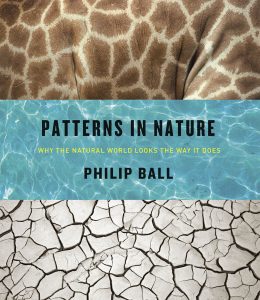
Publishers Weekly already christened Philip Ball’s Patterns in Nature: Why the Natural World Looks the Way It Does as the “Most Beautiful Book of 2016.” In a recent interview he did with Smithsonian Magazine, Ball lets us in on why, exactly we’re so drawn to the idea of patterns and their visual manifestations, as well as what let him to follow that curiosity and write the book. Read an excerpt after the jump.
***
What exactly is a pattern?
I left it slightly ambiguous in the book, on purpose, because it feels like we know it when we see it. Traditionally, we think of patterns as something that just repeats again and again throughout space in an identical way, sort of like a wallpaper pattern. But many patterns that we see in nature aren’t quite like that. We sense that there is something regular or at least not random about them, but that doesn’t mean that all the elements are identical. I think a very familiar example of that would be the zebra’s stripes. Everyone can recognize that as a pattern, but no stripe is like any other stripe.
I think we can make a case for saying that anything that isn’t purely random has a kind of pattern in it. There must be something in that system that has pulled it away from that pure randomness or at the other extreme, from pure uniformity.
Why did you decide to write a book about natural patterns?
At first, it was a result of having been an editor at Nature. There, I started to see a lot of work come through the journal—and through scientific literature more broadly—about this topic. What struck me was that it’s a topic that doesn’t have any kind of natural disciplinary boundaries. People that are interested in these types of questions might be biologists, might be mathematicians, they might be physicists or chemists. That appealed to me. I always liked subjects that don’t respect those traditional boundaries.
But I think also it was the visuals. The patterns are just so striking, beautiful and remarkable.
Then, underpinning that aspect is the question: How does nature without any kind of blueprint or design put together patterns like this? When we make patterns, it is because we planned it that way, putting the elements into place. In nature, there is no planner, but somehow natural forces conspire to bring about something that looks quite beautiful.
To read more about Patterns in Nature, click here.